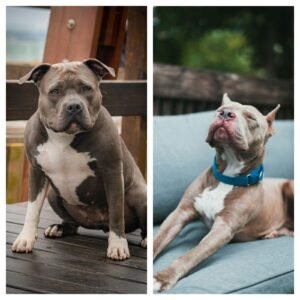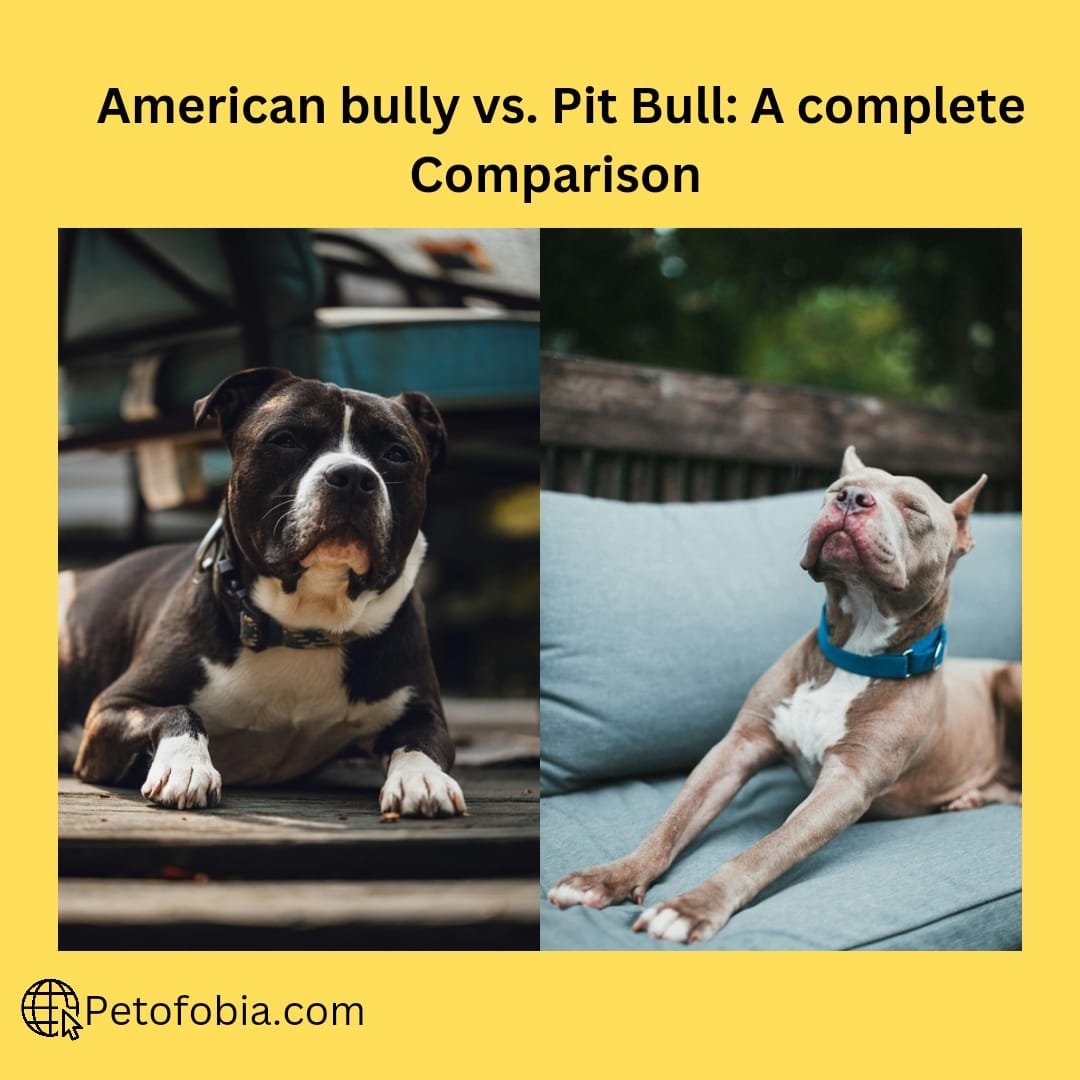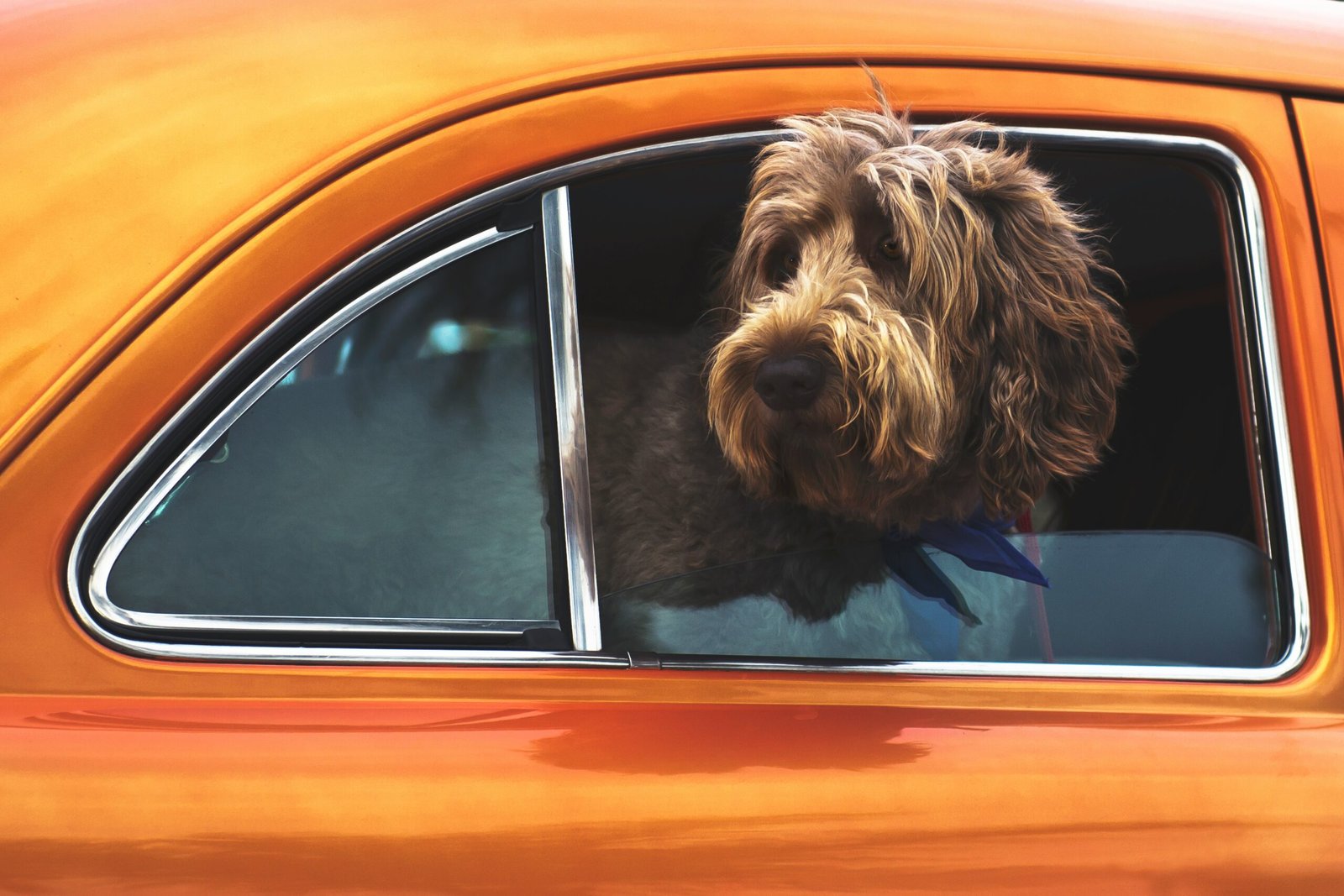Dogs have long been regarded as “man’s best friend,” yet there can be a lot of misunderstanding when it comes to certain types, such as Pit Bulls and American Bullies. These two breeds are different in many aspects, even if they may have a similar appearance and some traits. To help you comprehend these two cherished breeds, we’ll go further into their distinctions in history, looks, temperament, health, and more in this blog.
Table of Contents
ToggleHistory and Origin
Pitbull
The Pit Bull’s origins can be traced to England in the early 1800s, when it was first developed for the blood sport of bull-baiting, which was later made illegal. These canines, who were developed for strength, agility, and tenacity, were a mix between Old English Bulldogs and Terriers. The breed became a farm dog after bull-baiting was outlawed, and it eventually became involved in dog fighting, which is what gave rise to the breed’s current notoriety. In the US, the American Pit Bull Terrier was acknowledged as a separate breed.
American Bully
In the 1990s, a relatively new breed called the American Bully appeared in the US. American Pit Bull Terriers were crossed with other bulldog-type breeds, such as the English Bulldog, American Bulldog, and even the Olde English Bulldogge, to create this hybrid. The intention was to produce a companion dog with a mild disposition and a robust, muscular frame. Many kennel clubs recognise the American Bully, but it’s crucial to understand that it’s not the same as the American Pit Bull Terrier.

Appearance
Pitbull | American Bully |
Height: 17 to 21 inches at the shoulder. | Height: 13 to 21 inches at the shoulder, depending on the size variation (Standard, Pocket, XL, etc.). |
Weight: 30 to 60 pounds. | Weight: 70 to 120 pounds, often heavier than a Pit Bull. |
Build: Athletic, lean, and muscular with a medium-sized frame. | Build: Stocky and broad with a muscular and bulky frame. |
Head: Broad skull with a defined jaw. | Head: Larger, blocky head with pronounced cheeks and a wider stance. |
Coat: Short, stiff coat that comes in a wide variety of colors. | Coat: Short, smooth coat that also comes in various colors. |
Temperament
Unfair stereotypes about aggressive dogs have been applied to both American Bullies and Pit Bulls. Actually, both types are renowned to be devoted, loving, and excellent family dogs when nurtured correctly.
Pitbull
Pit bulls are renowned for their bravery, loyalty, and intelligence. They are often quite loving and people-oriented dogs, in spite of the bad publicity. Because of their playful temperament, they are frequently referred to as “clowns” and thrive on human interaction. To guarantee good behaviour around other animals and strangers, Pit Bulls may need rigorous, persistent training as well as early socialisation due to their strong will.
American Bully
It was particularly bred into the American Bully to have a more relaxed, family-oriented temperament. They are wonderful companion dogs since they are kind, self-assured, and terrific with kids. The breed was created to improve the Pit Bull’s loving qualities while removing its fighting instinct. Although socialisation is still important, American Bullies are frequently more accepting of other animals.

Health and Lifespan
Though there are a few difficulties unique to each breed, the health of both Pit Bulls and American Bullies is generally good.
Pit Bull | American Bully |
Lifespan: 12 to 16 years. | Lifespan: 10 to 13 years. |
Common Health Issues: Pit Bulls are prone to hip dysplasia, allergies (especially skin allergies), and heart disease. Regular vet check-ups, proper diet, and exercise are essential to maintaining their health. | Common Health Issues: Due to their stockier build, American Bullies may be more prone to joint issues like hip and elbow dysplasia. They are also at risk for brachycephalic respiratory syndrome due to their broad head and shorter snout. Keeping them at a healthy weight is crucial to prevent joint and respiratory problems. |
Exercise Needs
Both breeds are energetic and require regular exercise to stay happy and healthy.
Pit Bull | American Bully |
· Pit bulls are athletic, incredibly spirited canines that require a lot of exercise. For kids to stay interested, regular walks, fun, and cerebral stimulation are essential. If they don’t get enough exercise, they risk getting bored and acting out.
| · The American Bully needs daily exercise even though it is not as energetic as the Pit Bull. Playtime, strolls on a regular basis, and moderate exercise help them stay lean and avoid fat. When it comes to inside, they are typically more laid back than Pit Bulls.
|
Trainability
Pit Bull
Pit bulls are rather easy to train because they are bright and eager to please. They are best trained using a tough, positive reinforcement-based approach because they might be resistant at times. Getting them socialised early on is essential to making sure they behave well in both human and animal environments as adults.
American Bully
In addition, the American Bully is quite intelligent and trainable. They are somewhat easier to handle because of their placid disposition, especially for new dog owners. Similar to the Pit Bull, proper behaviour is ensured by early socialisation and positive reinforcement training.

Living Condition
Pit Bull
If given enough exercise, pit bulls may adapt well to a variety of living situations, including flats. They thrive in houses with yards where they can run around and get some fresh air. Pit Bulls, however, flourish in households where they receive lots of attention because they can develop separation anxiety if left alone for an extended period of time.
American Bull
Because they are a more laid-back breed, American Bullies may thrive in both apartment buildings and homes with yards. But because of their size and strength, it’s crucial to provide them enough room to go about and engage in regular exercise. Compared to the hyperactive Pit Bull, they are usually happier indoors.
Public Perception and Legal Considerations
Unfortunately, the public’s opinion of both breeds is negatively impacted by their associations with aggressive behaviour and dog fighting. Pit bulls are subject to breed-specific legislation (BSL) in various areas, which prohibits or restricts ownership. Despite the fact that American Bullies frequently evade these rules, their striking similarity to Pit Bulls can occasionally cause miscommunication.
Conclusion
While there are some physical and historical similarities between the American Bully and Pit Bull, they are two different breeds with their own special qualities. The American Bully was developed as a companion dog with a more laid-back, family-friendly temperament, but the Pit Bull has a rich history as a working breed. The Pit Bull is an agile, energetic dog.
Both breeds produce devoted, beautiful companions when trained and socialised appropriately. They do, however, need dedicated owners who are aware of their training, health, and exercise requirements. It’s important to think about your lifestyle, experience, and the breed that best fits your home before choosing between the two.






